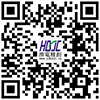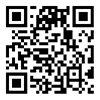How Lithium-Ion Batteries Work
Anode active substance, lithium ion source, for battery to improve the lithium source. Reversi...
1, cathode structure: cathode material + conductive agent + adhesive (PVDF) + fluid collection (aluminum foil)
Anode active substance, lithium ion source, for battery to improve the lithium source. Reversible lithium ion deembedding occurs during charge and discharge.
The positive active material of the lithium ion battery of transition metal oxides, they are the semiconductor or insulator, electrical conductivity is not high, in order to improve the utilization of active material, ensure that the electrode has a good charge and discharge performance, need to join the conductive agent used to improve active material in the electrode and set between the fluid and the electrical conductivity between active particles.
PVDF adhesives are used to bond lithium cobalate, a conductive agent, and aluminum foil or aluminum mesh.
NMP: Weakly polar liquid, used to dissolve/swell PVDF and to dilute slurry.
Fluid collector is mainly to gather the current generated by the active substance of the battery to form a larger current output, so the fluid collector should be fully in contact with the active substance, and the internal resistance should be as small as possible.
2, anode structure: anode material + conductive agent + thickener (CMC) + binder (SBR) + fluid collection (copper foil)
3, electrolyte: lithium hexafluorophosphate + carbonate organic solvent (EC)
The electrolyte acts as an ion in a battery. During a battery discharge, Li+ passes from the negative electrode through the diaphragm to the positive electrode, and electrons travel from the negative electrode through an external circuit back to the positive electrode, creating an electric current. The electrolyte makes the lithium ions more conductive, increasing the efficiency of charging and discharging batteries.
4, diaphragm: diaphragm (PP, PE) + diaphragm coating (PVDF)
Diaphragm is a kind of have the function of the microporous structure of the membrane material, thickness of 8 ~ 40 microns, the battery system plays a space is negative, cut off when the charging and discharging circuit of electronic through, allow the electrolyte of lithium ions through the role of freedom, but in the case of the battery charge and discharge or temperature selectively closed pores, to limit the excessive current, prevent short circuit, Its performance directly determines the overall performance of the battery.
5. Working principle
When charging, under the action of the external voltage, the lithium ions of the active material in the positive electrode are released, and the lithium ions migrate and diffuse to the negative electrode through the electrolyte and embed into the surface or body phase of the negative electrode to form lithium embedded compound LiCx, while the electrons migrate to the negative electrode through the external circuit to form a loop and form a current, which realizes the storage of energy. Discharge process is the reverse reaction of charging process, lithium ion emerge from the LiCx embedded lithium compounds and at the same time release the electronic, lithium ion by internal circuit (or electrolyte) from the spread of the cathode to the anode in order to maintain the charge balance, and then through the combination of electronic and reaction to form the positive active material again to take off the lithium battery anode materials, finally realize the energy released. Lithium ion battery charge and discharge process, therefore, is the anode materials are reversible REDOX process, and lithium ion battery performance depends on the anode material of lithium ion is out or the number of embedding capacity, across the electrodes of lithium ion worse off embedded materials can produce the irreversible capacity loss, attenuation caused by capacity, performance degradation.




